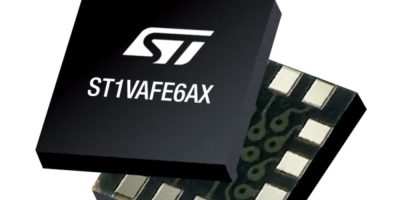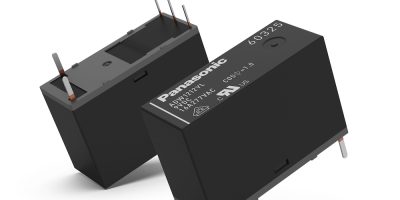Panasonic is now offering PAN-MaX, a multi-tier Matter Certificate Service designed for device manufacturers selling in the smart home market, to simplify Matter enablement for smart home devices.
The Matter standard from the Connectivity Standards Alliance (CSA) is a major industry-led effort to address the highly fragmented market of connected smart homes. It aims to solve the challenge of interoperability, which is considered the biggest impediment for device manufacturers selling to a multi-vendor smart home customer. Matter establishes interoperability on top of familiar standard wireless communication technologies like Wi-Fi, Bluetooth Low Energy, and Thread, allowing devices from different vendors to interact and understand each other using a common language. Additionally, the notion of IoT device security comes pre-baked into the standard itself, fundamentally addressing the problem of unauthentic fake product copies that currently plagues the industry. This is why big and small players alike in the smart home industry see the Matter technology as the bedrock for the consolidation of the smart home market.
In the above context, Panasonic Industry offers Matter enablement through its portfolio of wireless modules to provide the necessary wireless interfaces (BLE, Thread, and Wi-Fi) mandated by the Matter standard on PCB, as well as PAN-MaX, a digital trust solution for Matter products aimed at simplifying the production-related challenges faced by smart home device manufacturers.
PAN-MaX closes the loop for device manufacturers by providing all the necessary capabilities required for making a Matter product. Device manufacturers can achieve hassle-free Matter deployment with manufacturer-specific versions of Panasonic wireless modules. In doing so, Panasonic takes charge of implementing the digital trust solution, injecting Device Attestation Certificates (DACs) issued from a Panasonic managed PKI infrastructure into compatible Panasonic wireless modules, which are signed against a root certificate issued to a CSA-approved Product Attestation Authority. Device manufacturers can further leverage Panasonic’s European production facilities by pre-programming business logic and other customer/product-specific information during wireless module production in Panasonic’s factory.
Acknowledging that one size doesn’t fit all, the PAN-MaX service can be tailored to suit individual customer and project requirements. Available with different service level tiers: Silver, Gold, or Diamond, device manufacturers can choose from multiple price points, underlining Panasonic’s effort to promote Matter and make it accessible to customers of all project types and volumes. Panasonic simplifies an otherwise complicated multi-vendor setup, such that device manufacturers or their EMS partners don’t have to plan for additional production-related investments for a Matter project, and avoid all risks of escalating hidden costs.
IoT
Mouser now stocking ST biosensor for smart devices and wearables
The ST1VAFE6AX provides design engineers with next generation biopotential signal detection and motion tracking for a variety of applications, including heart rate, pulse monitoring, electrocardiogram (ECG) and activity tracking for wearables and portable medical devices.
The ST1VAFE6AX features a vertical analogue front end (vAFE) channel to detect biopotential signals and includes a 6-axis inertial measurement unit (IMU) for motion tracking. This biosensor embeds advanced dedicated features and data processing for motion processing like the finite state machine (FSM), sensor fusion low power (SFLP), adaptive self-configuration (ASC), and machine learning core (MLC) with exportable artificial intelligence (AI) features and filters. The device fully synchronises biopotential and motion sensing for context-aware analysis. The ST1VAFE6AX biosensor’s compact 2.5 × 3.0 × 0.71 mm footprint makes it ideal for space-constrained applications. Application development with ST1VAFE6AX biosensor is supported by the STEVAL-MKI242A adapter board.
The STEVAL-MKI242A adapter can also be used with the STMicroelectronics STEVAL-MKI109V3 motherboard, the STEVAL-MKBOXPRO programmable wireless box kit, or the X-NUCLEO-IKS4A1 motion MEMS and environmental sensor expansion board.
Microchip expands portfolio to include multi-core 64-Bit microprocessors
Microchip is expanding its computing range to meet the rising demands of today’s embedded designs. Making Microchip a single-vendor solution provider for MPUs, the PIC64 family will be designed to support a broad range of markets that require both real-time and application class processing. PIC64GX MPUs, the first of the new product line to be released, enable intelligent edge designs for the industrial, automotive, communications, IoT, aerospace and defence segments.
The intelligent edge often requires 64-bit heterogenous compute solutions with asymmetric processing to run Linux, real-time operating systems and bare metal in a single processor cluster with secure boot capabilities. Microchip’s PIC64GX family manages mid-range intelligent edge compute requirements using a 64-bit RISC-V quad-core processor with Asymmetric Multiprocessing (AMP) and deterministic latencies. The PIC64GX MPU is the first RISC-V multi-core solution that is AMP capable for mixed-criticality systems. It is designed with a quad-core, Linux-capable Central Processing Unit (CPU) cluster, fifth microcontroller class monitor and 2 MB flexible L2 Cache running at 625 MHz.
The PIC64GX family boasts pin-compatibility with Microchip’s PolarFire SoC FPGA devices, offering a large amount of flexibility in the development of embedded solutions. Additionally, the 64-bit portfolio will leverage Microchip’s ecosystem of tools and supporting software, including a host of powerful processes to help configure, develop, debug and qualify embedded designs.
Polarised power relay from Panasonic for smart lighting and IoT applications
The DW-YL is Panasonic Industry’s latest addition to the DW range of Polarised Power Relays. Providing an up-to-20A of latching relay functionality, the DW-YL series is specifically designed for demanding applications with high inrush currents. They can handle up to 320A for 1.2ms, making them ideal for capacitive loads and other scenarios where robust inrush current handling is required.
Its compact PCB footprint of just 10mm wide ensures minimal space usage, allowing for more efficient design layouts The one or two coil latching design minimises power consumption nearly to zero, making these relays energy-efficient for applications and devices that are designed to fulfil modern sustainability requirements.
With a TV8 rating, the DW-YL relays offer high performance and durability, capable of handling up to 320A inrush current. Additionally, their low profile of just 15.8mm makes them suitable for applications where space is at a premium. These relays are also UL/C-UL and VDE certified, ensuring compliance with international standards.
The DW-YL series is particularly suitable for a variety of applications in lighting, IoT devices, and power distribution units (PDUs). In lighting, these relays can be used in electrical ballasts, smart lighting systems, and LED drivers where high inrush currents are common. For IoT applications, DW-YL relays are ideal for smart plugs and smart switches, providing reliable performance in compact devices. In PDUs, these relays can be used in multi-outlet power strips to ensure safe and efficient power distribution.
About Smart Cities
This news story is brought to you by smartcitieselectronics.com, the specialist site dedicated to delivering information about what’s new in the Smart City Electronics industry, with daily news updates, new products and industry news. To stay up-to-date, register to receive our weekly newsletters and keep yourself informed on the latest technology news and new products from around the globe. Simply click this link to register here: Smart Cities Registration







